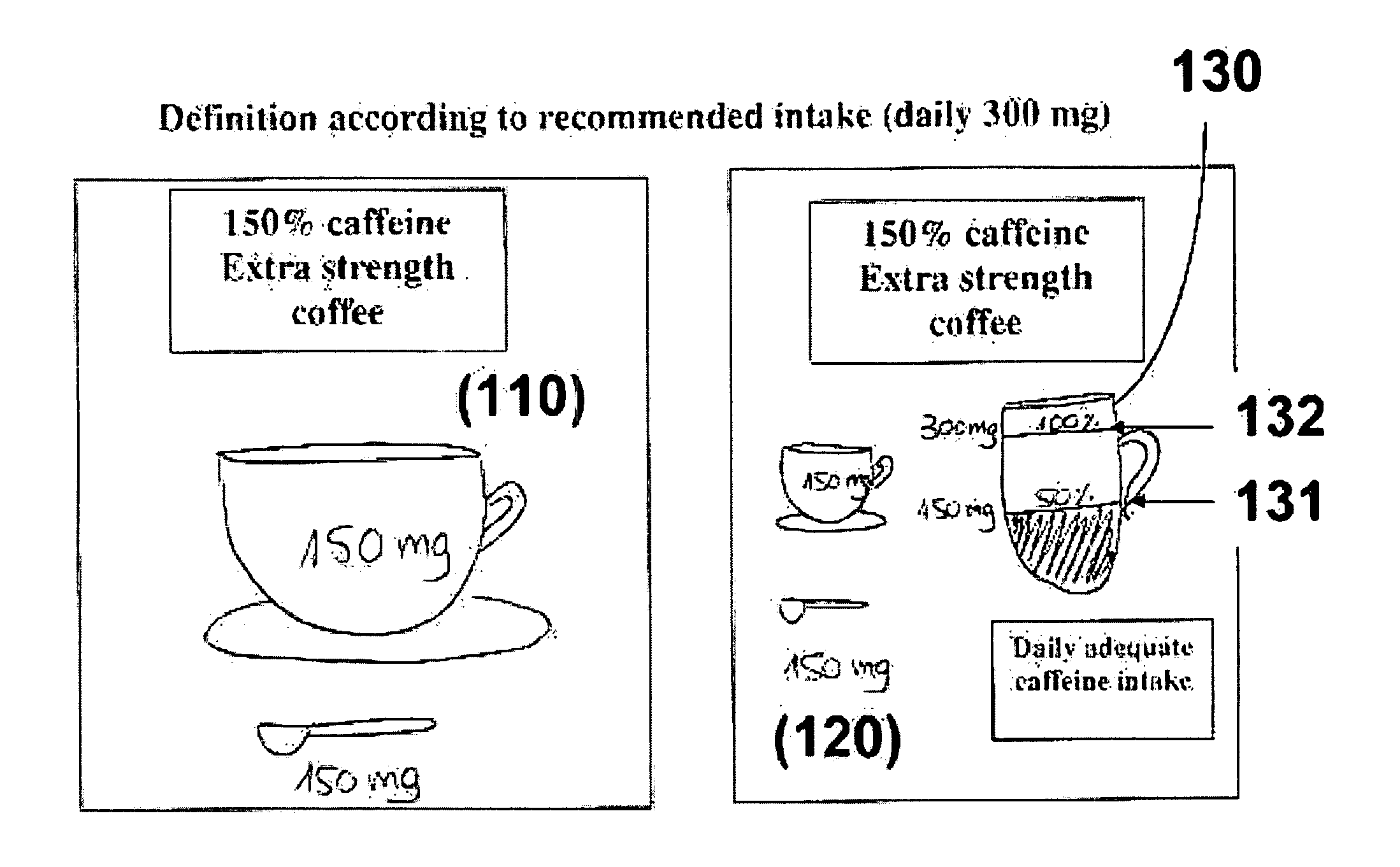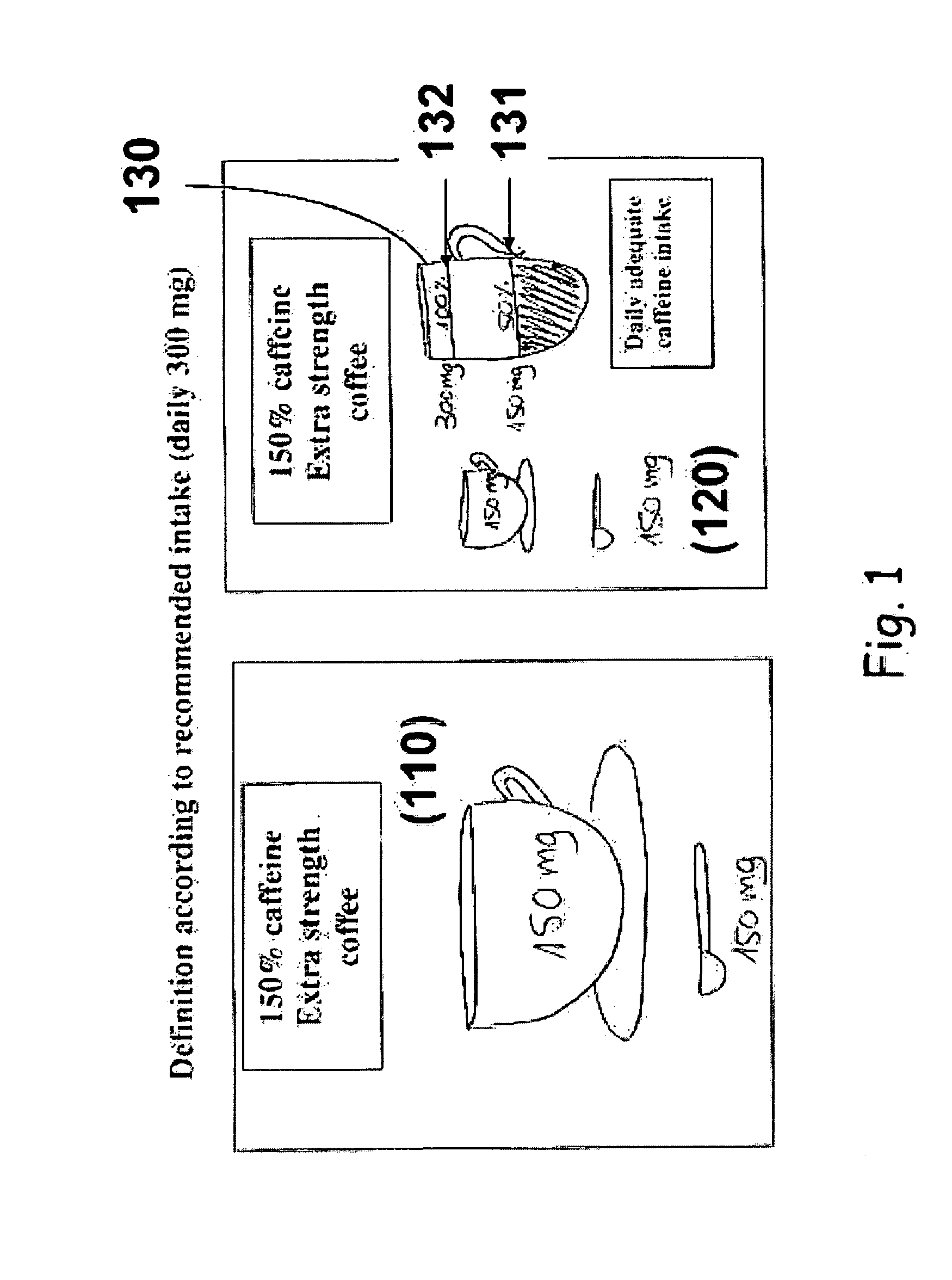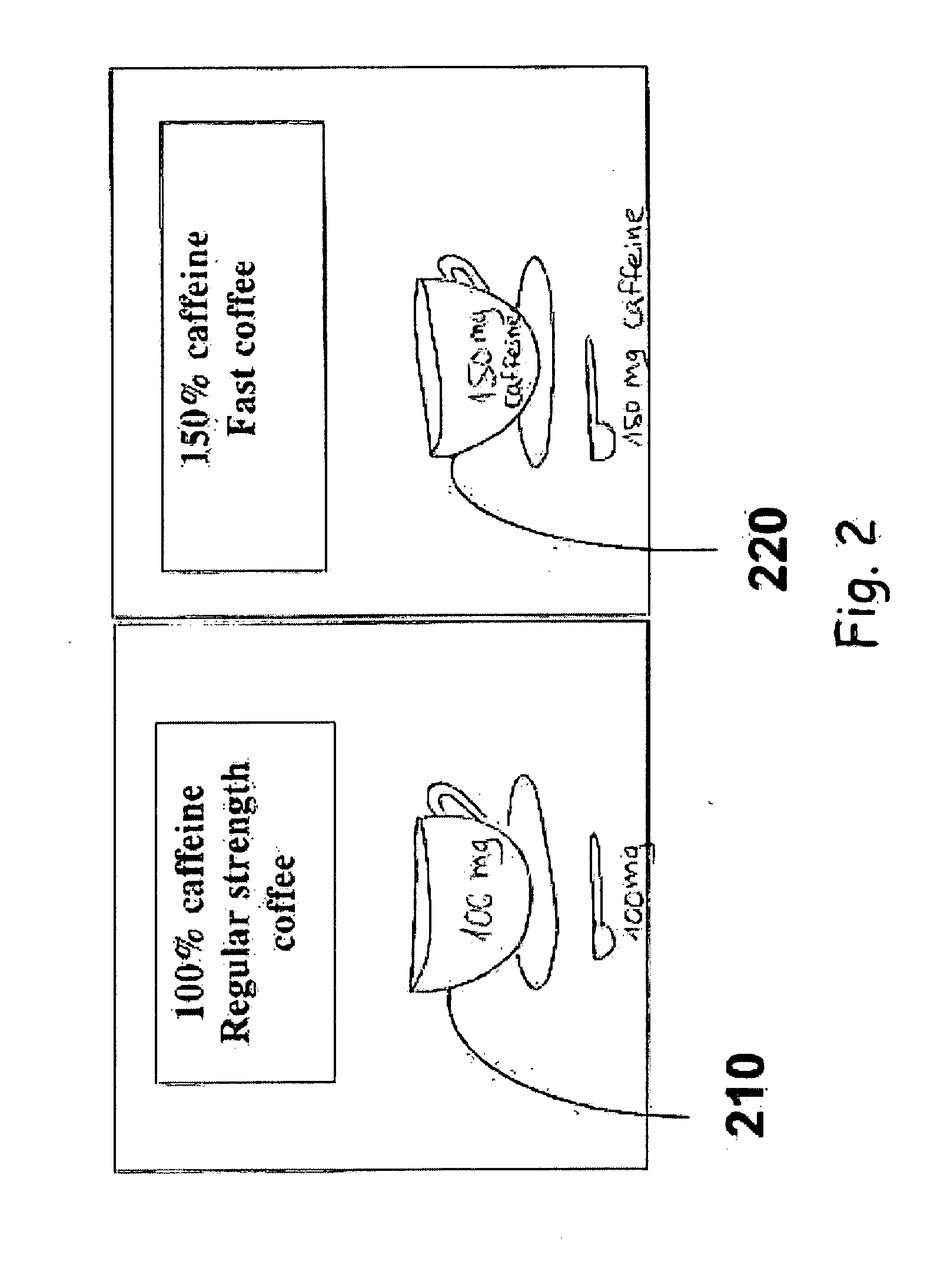System and method for control of caffeine preparation and use
- Summary
- Abstract
- Description
- Claims
- Application Information
AI Technical Summary
Benefits of technology
Problems solved by technology
Method used
Image
Examples
Embodiment Construction
[0089]The principles and operation of a method and a system according to the present invention may be better understood with reference to the drawings and the accompanying description, it being understood that these drawings are given for illustrative purposes only and are not meant to be limiting.
[0090]Table 1 below shows the range of caffeine concentration in various coffee sources. This emphasizes the problem of a “50% coffee” mix, which does not promise any caffeine references. E.g., it can be 50% 101 (Mocha Mattari (Yemen)) strength or 50% 142 (Tanzania Peaberry) strength, having about 40% difference in caffeine content between the two, although people were looking for 50% reduced caffeine strength, but may be getting 50% of strong coffee, which may be much more than they want and calculate.
[0091]Table 2 below shows that the most popular coffee contains, on average, 100 mg / coffee serving. As the regular way of preparing coffee is using 1 teaspoon (tsp), the ‘standard’, ‘regular...
PUM
 Login to View More
Login to View More Abstract
Description
Claims
Application Information
 Login to View More
Login to View More - R&D
- Intellectual Property
- Life Sciences
- Materials
- Tech Scout
- Unparalleled Data Quality
- Higher Quality Content
- 60% Fewer Hallucinations
Browse by: Latest US Patents, China's latest patents, Technical Efficacy Thesaurus, Application Domain, Technology Topic, Popular Technical Reports.
© 2025 PatSnap. All rights reserved.Legal|Privacy policy|Modern Slavery Act Transparency Statement|Sitemap|About US| Contact US: help@patsnap.com



